“Wow!” I exclaimed as I picked up a drawn picture of my then 4-year-old son’s that I found in his pile of artistic endeavors. This was definitely an improvement in his drawing ability!
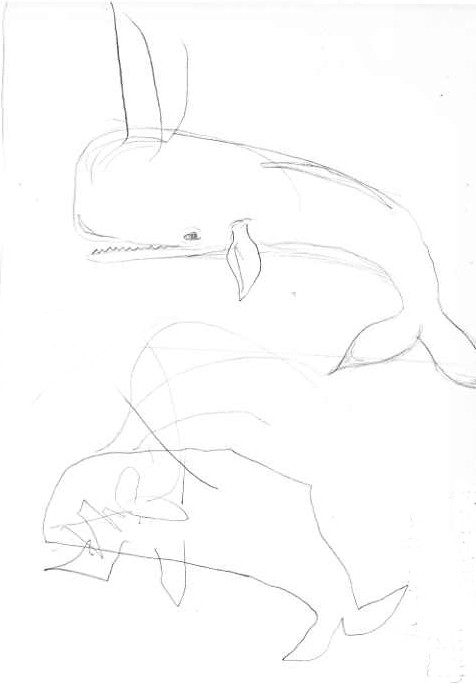
I sought him out and asked, “Son, did you draw this?!”
After recognizing the picture, his eyes lit up and he excitedly replied, “Yes. Do you want me to show you how I did it?”
“Why, sure.” I wondered what amazing feat he was to reveal.
“Look, you can put a piece of paper on the top of a drawing, and then, see, you can draw on top of it.”
My reactionary response was a less than impressed, “Oh”, before I recognized his concentrated grin that indicated he was pleased by his own discovery. He quickly halted his drawing as I witnessed the fire ebb from his eyes at my reply. He shifted to a confused realization that this product was receiving less than admirable accolades from a mother who was usually quick to join him in his enthusiasm for new explorations. I am especially in tune to my children’s feelings and was able to instantaneously repent of my inconsideration to his interests. I further solidified my support of this new genre of drawing by explaining to him that there was such a resource available to him called “tracing paper.” His eyes grew wide and he went through too many pads of tracing paper than I can count before we both realized that not only was regular paper more sturdy for him (I taught him how to put it up against a window if you couldn’t get a good image), but more cost effective for me.
More importantly, my eyes were opened to the benefits of tracing subsequent to my son showing me this new skill. By tracing someone else’s drawings over and over again, Eric gleaned new drawing techniques through repetitious modeling. I noticed that after drawing a certain type of picture repeatedly that his freehand drawings incorporated the technique. For instance, maybe he was tracing characters that had fists. Well, eventually I would see fists in his freehand drawings done correctly whereas before, they had been less than ideal. Or maybe he was tracing animals with their hind legs done correctly. Before too long the hind legs on his animals were drawn more realistically. Therefore, tracing enabled my son to develop technique.
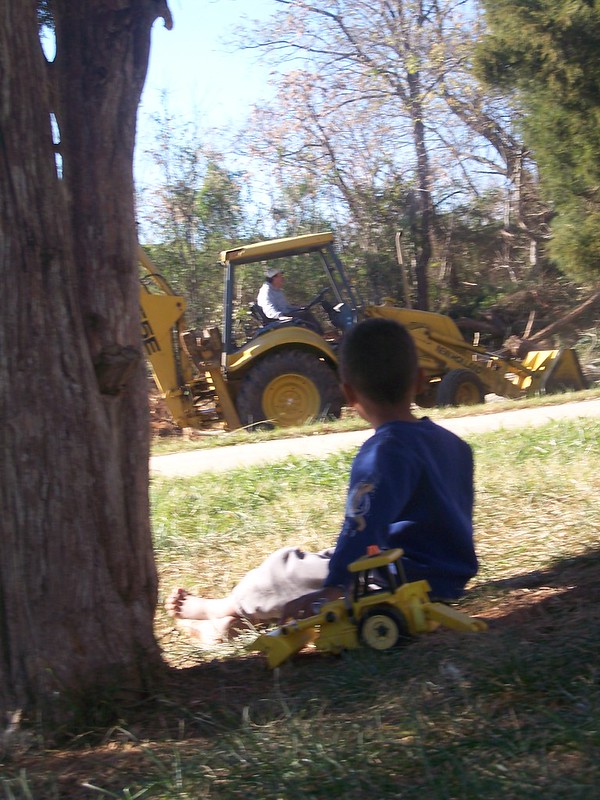
My artist son also used the technique of copying, or modeling, to develop his ability to depict story lines. At the time the movie Jurassic Park came to the theaters, we knew my (then 6-year-old) son’s passion for dinosaurs would inspire him to want to attend this movie, but we also knew about his highly sensitive nature. So my husband went to the movie alone to determine the extent of the frightening parts. Upon his return, my husband honestly depicted its scariness to my artist son, especially on the big screen. We recommended he wait to see the movie until it came out on video. He readily agreed. However, his fascination of the movie did not dissipate simply because he had not watched it. His father had viewed it; therefore, he pumped him for the details of the movie part by part. My artist son then would recreate the scene on paper with as much detail as possible and would have my husband review it for accuracy. This would continue 1-2 hours a day or until my husband bored of it, for 4-5 days until it was complete. Then he would do it again!
My artist son seemed inspired by this technique, so he did the same thing after he watched The Lion King except he did not have to ask my husband since he had watched the movie himself. He recreated the movie part by part and now would spend 4-5 hours per day since he never bored of it easily. Without any reference except that one visit to the theater, my artist son was able to recreate the scenes and depict the characters with startling accuracy. He would mimic this technique with his favorite cartoons as well. He did this for at least a year.
Once again, I did not initially think much of what he was doing except that it was a great time-consumer enabling me to do other things! However, in retrospect, I see how it fit into the greater picture. This mimicking was much like his tracing of the pictures. By duplicating existing story lines, my artist son was able to “feel” how they were created in order to begin his own. And he did. It was near the end of this experience that the Eric and Abbey Adventures evolved. This adventure story line contained great humor, consistency and depth. My artist son created a new Eric and Abbey Adventure at least 2-3 times a week for a good year or more!
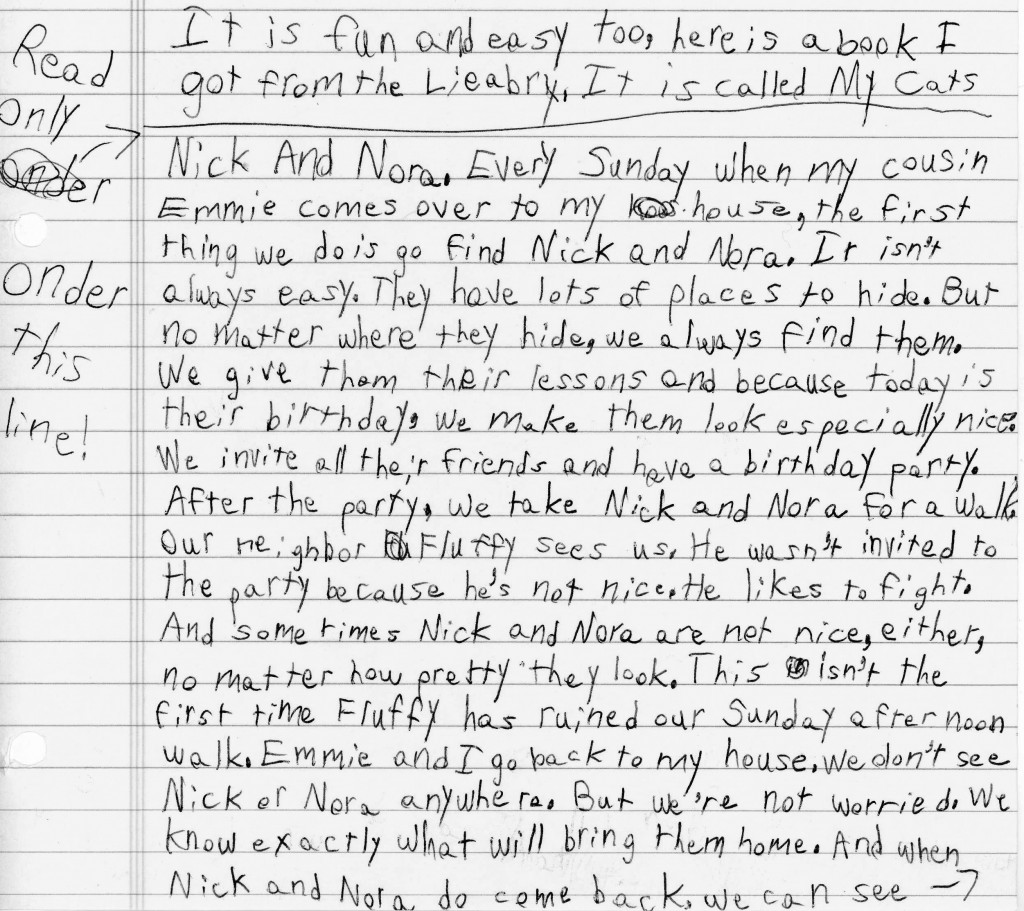
My artist son’s younger sister also used copying a storyline using her own learning style. She is a fantasy writer today, but it started with her copying word for word from some of her favorite books when she was 5-7 years old. She delved a bit into short stories and poetry at that time as well in imitation of these books. In the 8-10 year old range, I noticed that my writer daughter would often re-read books over and over again. She has probably read The American Girl series one hundred times in her life. Further, I noticed that she “read below her level” staying at the 8-10 year old book level well into her 11-13 year old timeframe. Again, in hindsight, I see how she was “researching” story patterns for this age group for which she now writes novels for that level. How else does someone learn about good writing, but to read and mimic good writing?
At about the same time my artist son was recreating story lines, my husband began to tell stories to the two older children as part of their bedtime routine. My husband had diverse stories he would tell. One story line was based on a mixture of two easy readers: Morris Goes to School and Amelia Bedelia. The initial character was Nooffy MaDooffy, the stupidest person in the world. Later, relatives were added to the story line such as Scruffy MaDuffy, the dirtiest person in the world, and Raffy MaDaffy, the weirdest person in the world. My husband would also tell moral stories, usually involving animals, like a fish that always swam in the opposite direction as all the others. In addition, he told adventure stories like “The Purple Parrot” and “How the Raptor Got It’s Name”. My husband is a very talented storyteller and could create stories from his head. The children loved them.
I decided these stories were pretty good and should be captured on tape for posterity. My husband worked best winging it at bedtime with the children so I set up a tape recorder to see if he could still perform even though he was being recorded. It was a successful venture and eventually he filled both sides of a tape. Now the children listened to my husband’s story tape at bedtime when he was not in the mood to tell new stories. It did not take long for the oldest two children to ask if they could have a blank tape so they could try to tell their own stories. Of course I provided them with several and away they went. At first my artist son told stories similar to my husband’s such as the Nooffy MaDoofy character stories although the actual story would be original. My writer daughter often provided the background sound effects. Then my artist son ventured into original story lines, and so it goes. (Of course, they went through the blank tapes as if it were water and it was not long before they had accidentally taped over my husband’s stories, so there go my future earnings from his storytelling!)
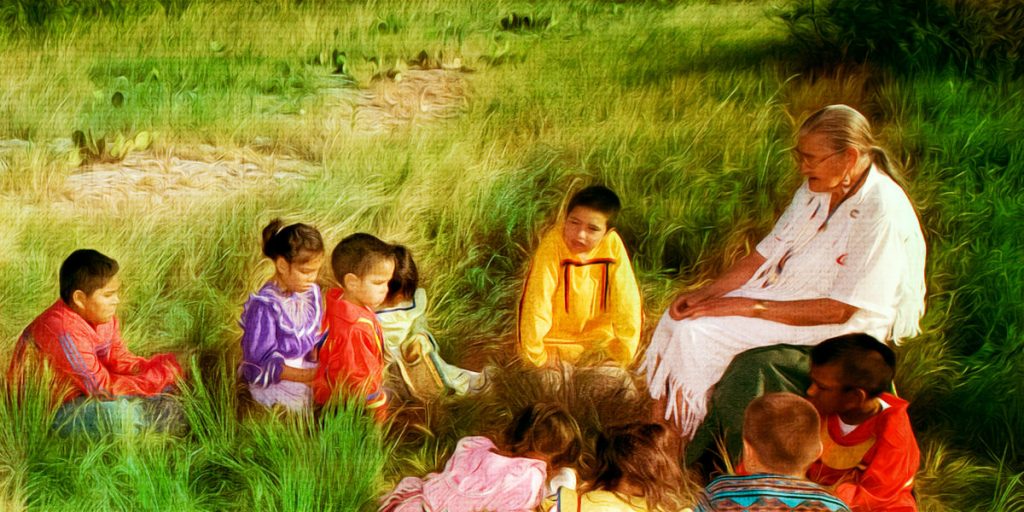
Schools dredge up a lot of focus on plagiarism and cheating through copying. In my opinion and from my perspective, that is for the adult world and for a system that highlights jumping through hoops versus learning to know, respectively. In fact, if one thinks about the ancient method of handing down stories to the next generation, before the written format was easily available, it was through oral storytelling. It was repetitiously told until others could retell the story accurately. It would do no good to experience the “telephone game” results of important stories to be remembered for historical significance.
The benefits from “copying” don’t end with story telling, however. When my third child, my builder son, became interested in computer programming at 14 years old, we meticulously tried to find a resource that would match his strengths. We knew he would want a written resource that would result in an actual product of a computer game, and we knew it had to be in a format that would not be too difficult for a person who has difficulty with the English language. As my builder son progressed successfully through the resource, I asked him how he was making it work for him. He explained that he would simply input the programming examples offered throughout the book into the computer, play around with it for a while himself to see if he could discover what it was meant to show him, and then go back to read the written explanation, at which point it would make more sense. My builder son used a form of copying in order to utilize his best strength!
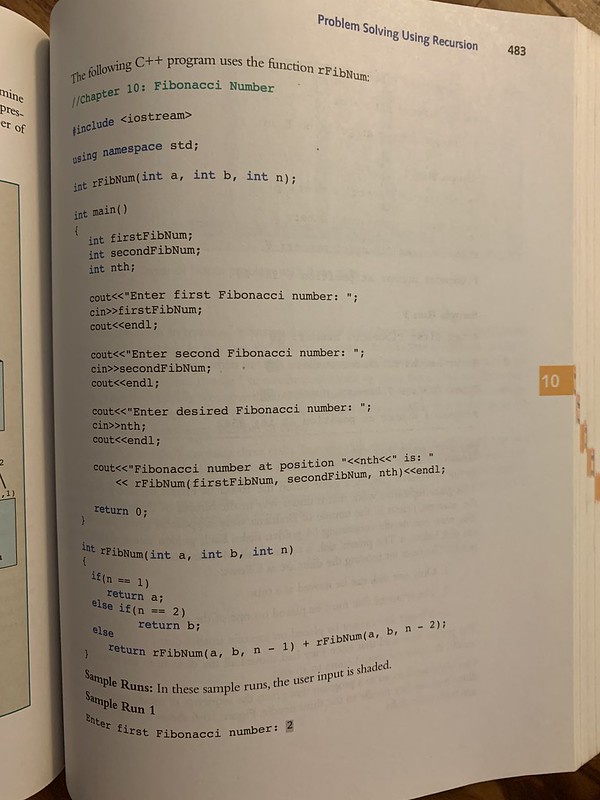
My builder son has mentioned he wants to attend college for computer programming so he wanted us to prepare him for the areas he was weaker in, such as using an essay format in responding to questions in any type of classroom topic, whether science or English. I had attended a conference hosted by Growing Without Schooling many years ago where I was able to sit in and listen to a panel of unschoolers grouped by twos: a parent and a teen. I was fascinated and uneasy at the same time as I heard one set describe how the teen learned to write essays. The mother was proficient at this skill and she would sit side by side with her son and tell him what to write and why. Slowly, over time, he would fill in more and more, relying less and less on her input. Eventually, he shared with her that her services would no longer be needed. Hearing this immediately put up my schooling conditioning about “cheating”. But my newfound understanding of how real learning takes place overruled this institutional viewpoint of modeling and mentorship. When he was around 14 years old, my builder son and his father did exactly this, and it worked beautifully for my son as he gained more and more confidence at navigating a language that had always been a struggle for him.
Plagiarism is for profiteering; cheating is for institutions. Using someone else’s expertise in order to gain better techniques through modeling, copying, or tracing as a form of learning can be just plain smart.
Originally published by me in the Life without Schooling blog.
If you benefited from this content, please consider supporting me by buying access to all of my premium content for a one-time fee of $15 found here. This will even include a 50% off e-mail link toward a copy of my popular The Right Side of Normal e-book (regularly $11.95)!





